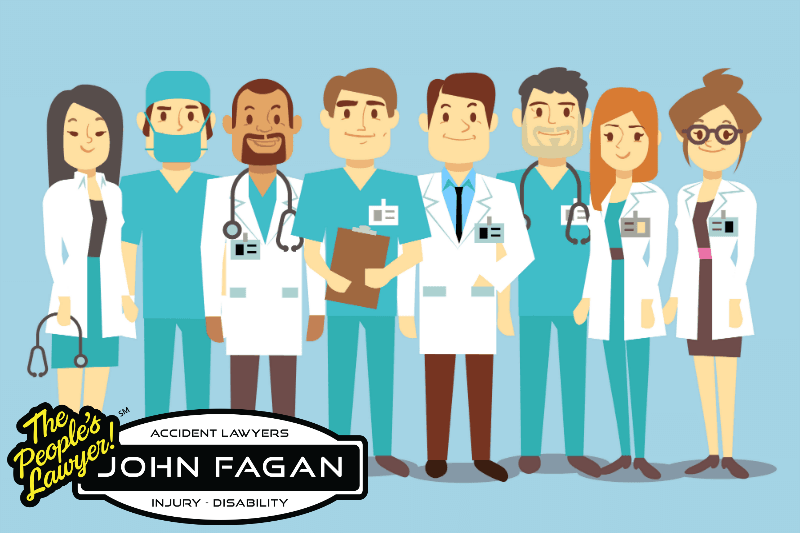Medical malpractice cases arise when a patient is harmed by a doctor or nurse (or other medical professional) who fails to provide proper health care treatment. Fortunately, doctors, nurses, and hospitals make mistakes in a small number of cases. But within that small minority of cases, certain types of errors crop up more often than others. Read on to learn about the doctor and hospital mistakes that make up the bulk of medical malpractice lawsuits.
A word of caution on the types of medical errors described below: Keep in mind that just because a doctor made a mistake or a patient was unhappy with a course of treatment or its outcome, that doesn’t mean malpractice necessarily occurred. In order to meet the legal definition of medical malpractice, the doctor or medical provider must have been negligent in some way — meaning the doctor was not reasonably skillful or competent, and that incompetence harmed the patient.
Misdiagnosis or Delayed Diagnosis
Misdiagnosis and delayed diagnosis account for a large percentage of medical malpractice complaints. When a doctor misdiagnoses a condition (or fails to diagnose a serious disease for some time), the patient might miss treatment opportunities that could have prevented serious harm or even death.
The key in proving a medical malpractice claim based on misdiagnosis or delayed diagnosis is to compare what the treating doctor did (or didn’t do) to how other competent doctors within the same speciality would have handled the case. If a reasonably skillful and competent doctor under the same circumstances would not have made the diagnostic error, then the treating doctor may be liable for malpractice.
Childbirth Injuries
A number of fetal injuries can be caused by medical malpractice, including brain injuries (such as cerebral palsy and seizure disorders), fractured bones, and erb’s and klumpke’s palsy (damage to nerves that control the arms and hands). However, keep in mind that these injuries are more often caused by something other than medical malpractice.
A physician or obstetrician’s negligence can happen during childbirth or long before.
Negligent prenatal care. If negligent medical treatment is provided during the pregnancy, it could harm the fetus or the mother (or both). Some examples of negligent prenatal care include the physician or obstetrician’s:
failure to diagnose a medical condition of the mother, such as preeclampsia, Rh incompatibility, hypoglycemia, anemia, or gestational diabetes failure to identify birth defects failure to identify ectopic pregnancies, or failure to diagnose a disease that could be contagious to the mother’s fetus (such as genital herpes or neonatal lupus).
Negligence during childbirth. A doctor’s negligence during childbirth could cause injury to the baby and harm to the mother. Common medical errors during childbirth include the physician or obstetrician’s:
failure to anticipate birth complications due to the baby’s large size or because the umbilical cord got tangled failure to respond to signs of fetal distress failure to order a cesarean section when one was appropriate, or incompetent use of forceps or a vacuum extractor.
Medication Errors
According to a 2006 study, medication errors harm approximately 1.5 million people in the United States every year. Medication errors can occur many ways — from the initial prescription to the administration of the drug. For example, a patient might be harmed if the doctor prescribes the wrong medication. Or the patient might be harmed by medication that the doctor prescribes to treat a misdiagnosed condition. In a hospital setting, the right drug might be given to the wrong patient.
However, by far the most common medication errors involve dosage — the patient gets too much or too little of a drug. This can happen several ways:
The doctor writes an incorrect dosage on the prescription. The prescription is correct, but the nurse administers the incorrect amount. Equipment that administers the drug malfunctions, causing a large dose of medication to be administered over a short period of time. For example, this can happen when a defibrillator has a dead battery or an intravenous pump has a dislodged valve.
Anesthesia Errors
Anesthesia mistakes are usually more dangerous than surgery mistakes. Even a small error by the anesthesiologist can result in permanent injury, brain damage, or even death. An anesthesiologist can commit medical malpractice even before anesthesia is administered by:
failing to investigate the patient’s medical history for possible complications, or failing to inform the patient of the risks involved if preoperative instructions aren’t followed (like not eating for a certain period of time prior to surgery).
Anesthesia errors that can occur during surgery include:
giving too much anesthesia to the patient failing to monitor the patient’s vital signs improperly intubating patients (putting a tube in the trachea to assist with breathing), or using defective equipment.
Surgery Errors
Some medical malpractice claims arise from mistakes made in the operating room. A surgeon might be negligent during the operation itself (puncturing internal organs, operating on the wrong body part, or leaving surgical instruments in the body) or the nursing staff might be negligent in administering post-op care (which could result in complications like serious infection).






